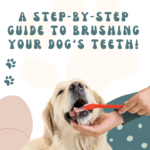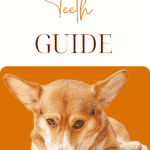Support for the blog comes from using the affiliate links below. At no additional cost to you, I may earn a commission on purchases. Thank you in advance.
How to brush dogs’ teeth
1. Timing is key
Choose a time when your dog is the calmest and most relaxed. Just like with people, it’s ideal to brush their teeth daily. If you don’t have time for that, brushing their teeth at least once a week will suffice, though the more often the better according to the ‘American Kennel Club’. Most dogs will learn to tolerate and appreciate teeth cleanings, even if they don’t like it at first.
2. Gather the tools
Dog toothbrushes are available which are specifically designed to make brushing your dog’s teeth easier. They come with angled handles, soft bristles and some even have multiple heads. This reduces the time it takes to reach all the tiny nooks and crevices inside your dog’s mouth. It is essential that you use doggy toothpaste as human toothpaste contains toxic ingredients like xylitol and fluoride that could cause significant harm.
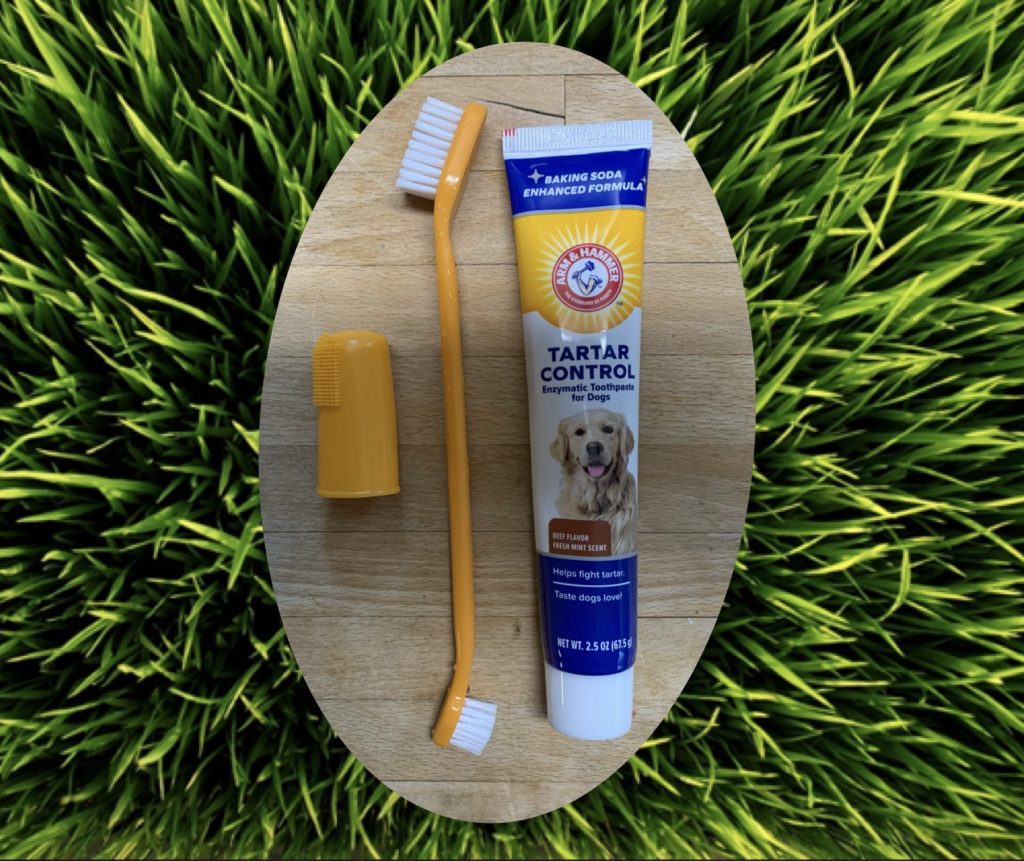
Dog toothpaste comes in many flavors like chicken and beef and tackles different problems such as tartar build-up and gum health. Keep the dental essentials on the floor nearby as part of exposure therapy, and always let your dog approach the tools if they’re curious.
3. Get Into Position
Make sure you’re in a spot where your dog is comfortable and relaxed. Don’t stand above your dog, hold them down, or take a threatening stance. They should remain calm and relaxed throughout so your body language should reflect this. Try kneeling or sitting in front of or to the side of them. Read your dog’s communication cues. If they seem upset or are beginning to show signs of frustration, stop, and try again later. This process may take a while to conquer but the most important thing is that your dog doesn’t begin to associate their teeth cleaning with negative experiences.
4. Test The Water
To begin with, test your dog’s willingness to have you touch their mouth by gently rubbing your finger along their upper gums and teeth. This will help them get used to the feel of something against their teeth. Use light pressure and take your time. You may need to get them comfortable with this over a few sessions before moving on to the next step.
5. Try Out The Goods
Put some dog toothpaste on your fingertip. Let your dog lick the toothpaste from your fingertip so that they can get used to the texture and taste. If after a few days they refuse to lick more toothpaste after their initial taste, try a different flavor. Hopefully, you’ll find one they see as a treat and look forward to having.
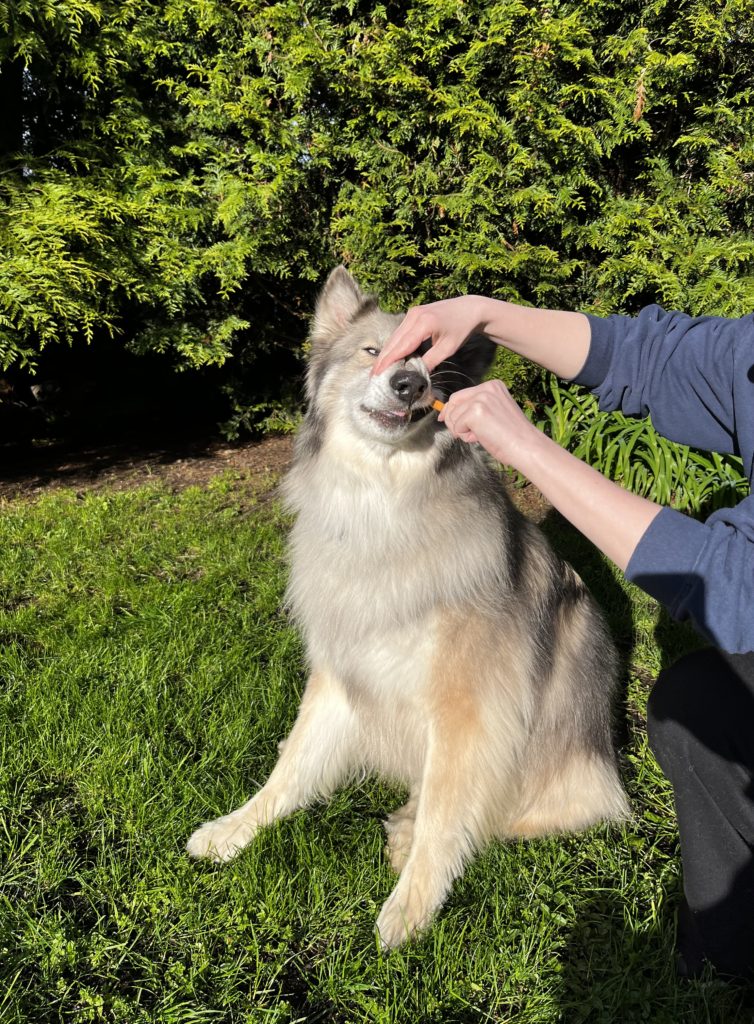
6. Graduate To Toothbrush
When your pup is used to you opening and touching their mouth, you can start using the toothpaste and toothbrush together. Lift their upper lip. As you approach their teeth with the brush, angle the bristles so they reach the gum line. Placing them at a 45-degree angle against their teeth will help the bristles massage the gum line and clear away plaque.
7. Use a Circular Motion
Brush in small circles, reaching top and bottom on each side. As you move the bristles along the gum line, some light bleeding may occur. Slight bleeding afterwards is not a concern. But ongoing or heavy bleeding may mean you’re brushing too harshly or it may be a sign of gum disease. Speak with your vet for advice.
8. Focus on the Plaque
Brush a few teeth at a time, working up to more each day. If your dog resists at first, try starting on the outsides of the canine and back teeth, where plaque tends to collect the most. If you can get the insides, great but if you can’t don’t worry. Dog tongues do a really good job of keeping the inside of their teeth clean.
9. Be Reassuring
Keep the mood light while you’re brushing your dog’s teeth and talk to them throughout. Gentle pats on the head will keep the experience calm and positive.
10. End on a Positive Note
When you’re finished brushing your dog’s teeth, reward them with their favorite treat or extra attention. Ending on a positive note is key so that they associate having their teeth cleaned with positivity.
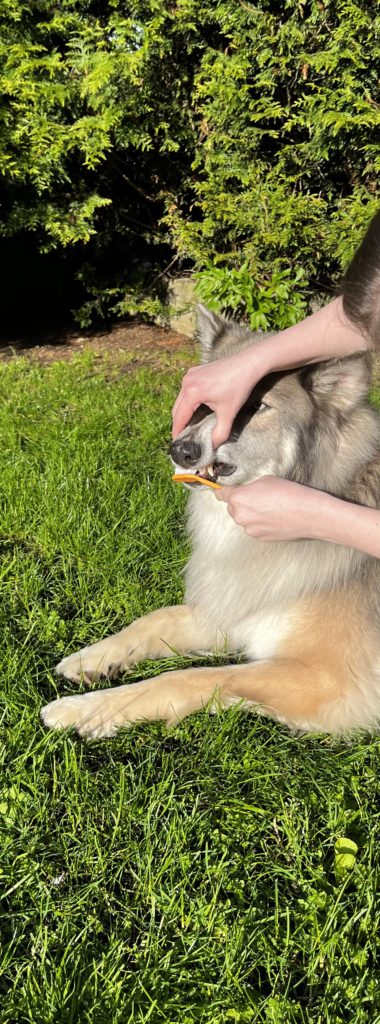
Final thoughts
Brushing your dog’s teeth is an important part of their overall health. With patience and a positive attitude, you can make the process enjoyable for both of you. Make sure to use proper technique while brushing your pup’s teeth, as well as reward them afterward with treats and extra attention.

